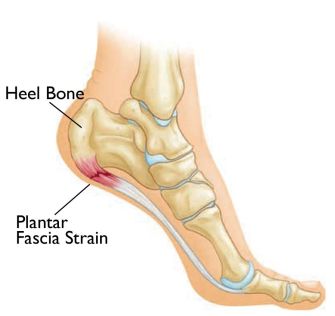The term plantar fasciitis is used when describing pain that occurs mainly in the heel.

It is also described as the inflammation of the fascia. It occurs from the ball of the foot to the heel. This makes it spread to its maximum limit when supporting your body weight to the ground with the foot. The inflammation might occur as a result of the fascia being put under intense stress.
Plantar fasciitis is most common to runners who abruptly increase their training intensity. Although treatable, its pain does not disappear immediately. Its symptoms vary from mild to severe, and they often last for long periods with the pain increasing and decreasing at unpredictable times depending on the degree of the injury. Below, we take a look at ways in which plantar fasciitis can be prevented.
- Wear shoes with firm grips
Ensure you rotate your training shoes often. Avoid going barefoot in areas with hard surfaces, especially during the first few steps of the morning. Also, avoid heeled shoes.
- Monitor your calves
A major cause of fasciitis is calf-tightness. Restricting your ankle movement due to the tightness of a calf will make other parts complete a task they are not responsible for. Each step taken leads to low levels of implantation in the fascia attachment. This scar tissue is torn by the first few morning steps, thereby causing great pain.
- Embrace low-intensity exercises
Exercises such as swimming do not lead to fasciitis. Instead, they minimise the chances of their occurrence. Once these exercises are over, stretch your calves out, or create circles using your feet.
- Cut weight
Overweight people tend to experience fasciitis compared to lean ones. When you are plus-sized, pressure may be put solely on the base of your feet which goes on to cause this pain.
- Always prepare for work-outs
The smallest things, at times, have the most impact. It helps to briefly prepare for intense workouts. This ensures that your body is physically set for immense training, thereby preventing fasciitis.
- Proper working conditions
Work that requires its workers to stand or move for long intervals often cause fasciitis. It would work best to take breaks in between to rest.
- Combat the cause of the problem rather than the symptoms
Most people tend to fight disease symptoms rather than their cause. This gets rid of the pain but only for a short period. While treating fasciitis has proved to be a difficult task because our feet are always in use, physical therapy has become a vital element in the healing procedure. Stretching properly and strengthening may be necessary not only for healing but also preventing their recurrence.
- Stretch often
Stretching often before exercising might lead to the elimination of problems that can cause fasciitis. You should include calf stretches in your day-to-day activities to ensure maximum flexibility of the legs.

- Undergo biomedical analysis
Book an appointment with your physician to ensure you get the full details of the mechanics of your gaits. This ensures that your feet are in perfect working condition. Changing your walking style could result in a significant change. Not only does it prevent the fasciitis from occurring but also reduces the pain in the knee.
- Ensure your sheets are not tucked tightly
Sleeping in tightly tucked in sheets will make you sleep in pointed positions. Lying on your back is a major factor that will lead to the development of fasciitis.
- Use shoe inserts
These are commonly known as insoles. They provide you with extra cushion, thereby tightening your shoe’s grip to your foot. When choosing them, you want to ensure that you settle for a firmer one for maximum arch support.
Other Ways to Prevent Fasciitis
In addition to the above, plantar fasciitis can be prevented in the following ways:
- Putting on flat shoes and walking on flat surfaces
- Ensuring you maintain proper calf flexibility
- Slowly but steadily increasing your activities rather than conducting large tasks with high intensity
- Avoiding running on uneven surfaces
- Always seeking medical help whenever you feel like you have fasciitis symptoms.
Written by Jeremy Roberts – Exercise Rehabilitation Specialist & Author of the Fast Plantar Fasciitis Cure™: how to cure plantar fasciitis FAST!

